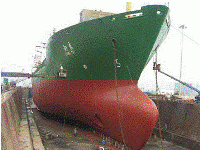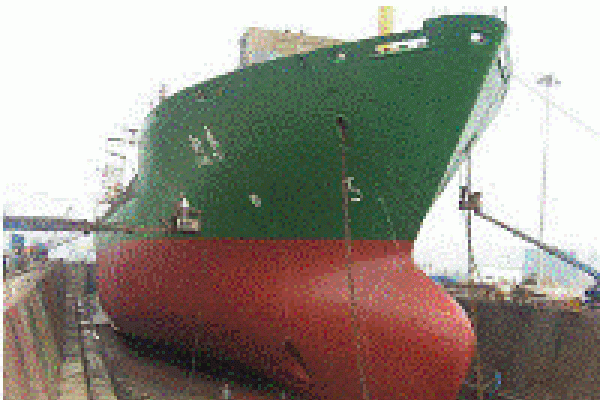
Steamship Mutual
Published: November 16, 2007

The International Convention on the Control of Harmful Anti-Fouling Systems on Ships was adopted on 5 October 2001 by IMO. The Convention enters into force 12 months after 25 states representing 25% the world's merchant shipping tonnage have ratified it. With the ratification by Panama on 17 September 2007, the Convention has been ratified by 25 States, with a combined 38.11% of world merchant shipping tonnage.
When the Convention is in force, ships will no longer be permitted to apply or re-apply organotin compounds which act as biocides in their anti-fouling systems; ships either shall not bear such compounds on their hulls or external parts or surface or, for ships already carrying such compounds on their hulls, a coating that forms a barrier to such compounds will have to be applied to prevent them leaching from the underlying non-compliant anti-fouling systems. The Convention also establishes a mechanism to evaluate and assess other anti-fouling systems and prevent the potential future use of other harmful substances in these systems.
The Convention will apply to ships flying the flag of a Party to the Convention, as well as ships not entitled to fly their flag but which operate under their authority and to all ships that enter a port, shipyard or offshore terminal of a Party. It will apply to all ships, including fixed or floating platforms, floating storage units and floating production storage and off-loading units.
Background
Anti-fouling paints are used to coat the bottoms of ships to prevent sealife such as algae and molluscs attaching themselves to the hull - thereby slowing down the ship and increasing fuel consumption. The Convention defines "anti-fouling systems" as "a coating, paint, surface treatment, surface, or device that is used on a ship to control or prevent attachment of unwanted organisms".
In the early days of sailing ships, lime and later arsenic were used to coat ships' hulls, until the modern chemicals industry developed effective anti-fouling paints using metallic compounds. These compounds slowly "leach" into the sea water, killing barnacles and other marine life that have attached to the ship. However, studies showed that these compounds persist in the water, killing sealife, harming the environment and possibly entering the food chain. One of the most popular anti-fouling paints, developed in the 1960s, contained the organotin compound tributylin (TBT), which has been proven to cause deformations in oysters and sex changes in whelks.
Today, there are a variety of effective anti-fouling systems available which do not contain TBT, such as organotin-free anti-fouling paints and biocide-free non-stick coatings which have an extremely slippery surface - preventing fouling occurring and making it easier to clean when it does.
Based on IMO Briefing 30/2007 of 18 September 2007.
For further information about the Convention see an earlier Steamship Mutual website article first published in Sea Venture in 2001: Anti-Fouling Systems


